Black Trompette / Summer / Autumn / Edible
Prepare to embark on a culinary journey filled with rich and earthy delights as we explore the edible treasure known as Black Trompette, also known as Trumpet of Death, scientifically referred to as Craterellus Cornucopioides.
In this blog post, we invite you to discover the exquisite flavors and captivating qualities of this unique mushroom. With its velvety black appearance and distinctive trumpet-like shape, the Black Trompette adds a touch of elegance and depth to any dish it graces. Join us as we delve into the secrets of this culinary gem, from the art of foraging to the artistry of preparing it in delectable recipes. Whether sautéed with butter, added to savory sauces, or incorporated into decadent pastas, the Black Trompette promises to elevate your culinary creations to new heights. Get ready to savor the dark delicacy of Craterellus Cornucopioides and let your taste buds revel in the complex and earthy flavors it has to offer.
Scientific name
Craterellus Cornucopioides
Family
Cantharellaceae
Habitat
Grows mainly with Beech and oak trees, on calcareous soils, preferring mossy patches. It occurs from August to November, more often favouring the cooler late autumn months.
Description
These mushrooms are incredibly hard to spot amongst the leaf litter, the colour can be quite variable between black and greyish.
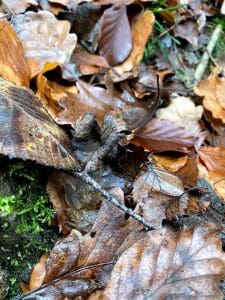
Identifying features for the Black Trompette:
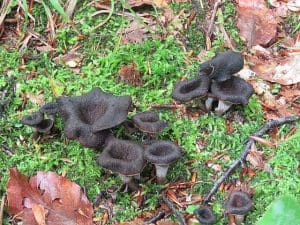
Cap:
Greyish black funnel shaped mushroom , the cap is usually enrolled at the edge and the centre is a deep funnel going the whole way down the stem. The cao surface is slightly felty
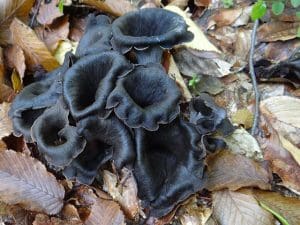
Stem:
The stem is thin fleshed and hollow, it’s hard to say where the cap ends and the stem begins.
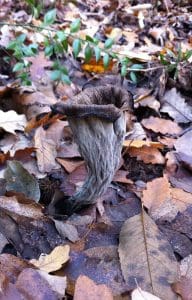
Gills:
There are no obvious gills but it can have small ridges running up the stem to the cap.
Smell:
Lovely and mushroomy
Spores:
Cream to Yellow
Uses
One of the best tasting mushrooms there is.
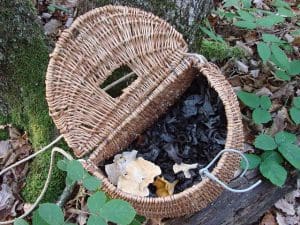
The Black Trompette In Food
This mushroom is excellent fried, dried and added to soups and stews but my favourite is stuffed with sticky flavoured rice and gently fried.
Known Hazards
None
Potential lookalikes
There’s nothing else out there that looks like this mushroom, but I have been disappointed when spotting a black Elfin Saddle from afar and hoped it was a black trompette.



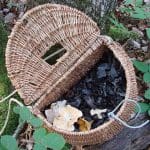
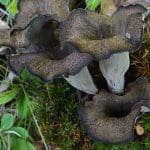
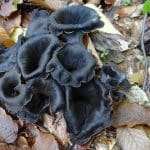
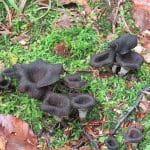
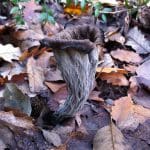



Leave a Reply
You must be logged in to post a comment.